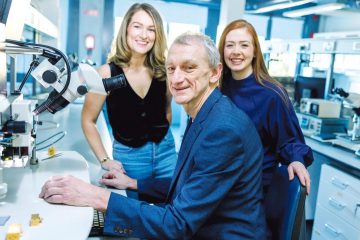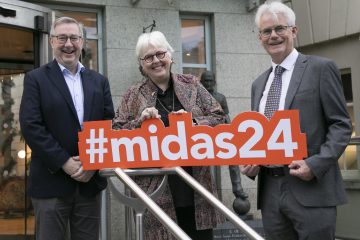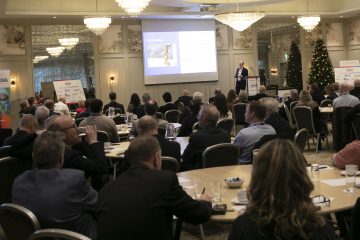Vastly improved radar systems, massively increased mobile internet bandwidth and range, improved navigation systems for driverless cares, and superior drone guidance systems are just a few of the applications the new technology developed by Irish Times Innovation Awards 2016 winner Arralis.
The Arralis chipset utilises the 94GHz frequency band to deliver higher resolutions and greater communications capabilities which can, among other advantages, dramatically improve the precision of aerospace guidance systems and the range and capability of mobile telephone networks.
“When you get to frequencies above 30GHz, wavelengths come down to millimetres,” says Arralis chief executive Barry Lunn. “As the wavelength gets shorter the antenna required gets smaller and the device can be made much smaller as well. Wifi routers operate at the 5.4GHz frequency at present but millimetre waves will offer bandwidth of 15Gb over long distances over wireless networks.”
The company has been growing rapidly and employs 20 people at present, with that number expected to double by the end of the year. “Business is flying at the moment,” says Lunn. “We are run off our feet and are almost victims of our own success. Usually you go out and put some effort into sales and expect a proportion of it to come back as orders. At the moment it’s all coming back to us. Our timing has been really good in coming to market when we did. Our biggest problem now is production and scaling that up to meet demand.”
Outsourced production
The majority of production is outsourced, with the company concentrating its efforts on R&D and sales and marketing. “It is always an issue with start-ups that you have to be careful with cash. You don’t want to have a warehouse full of product without any buyers for it. We outsource most production and will do some prototyping and smaller orders ourselves. The industry is all fabless [ie manufacturing is outsourced] now and this is the model that we will employ. We will look for a dedicated production line in a supplier facility at some stage though.”
Lunn sees two main areas for the company to grow in: radar vision systems and high-data-rate communications. “Our big customers at the moment are in the space and aerospace sectors,” he says. “One big area for us is helicopter landing systems. We are selling to six of the world’s top 10 aerospace companies at the moment. The European Space agency is also a big customer. We are now moving into mission supply with them. The major space agencies invest in new technologies like ours to test them at first and then start to use them in missions. That’s what’s happening to us now.”
The company is also talking to the major auto makers about radar systems for autonomous cars. At present the auto makers are using technologies such as lidar – a radar-like system using lasers – for machine-vision purposes but there really is no substitute for radar. “Radar is proven but the problem is that it is very expensive,” Lunn says. “But we are getting to a price point where we will be able to put a military-grade radar in a car.”
While this is an attractive market, Lunn is understandably cautious in his approach to it. “These guys can take up all your time and it can take up to five years before you do something with them. And then you get pushed into their supply chain. We are trying to get the balance right. The aerospace and space markets will be what funds our growth and technology development over the next few years but the 5G communications and the automotive markets will be where the volume will come from in the long term.”
The company’s approach to growth is quite cautious as well. “Some people see start-ups as win-or-bust enterprises. That’s not our approach. We want to build a proper, boring company that makes a profit.”
2025
Limerick telco firm Celtonn aims to close €1.5 million funding round in 2025
The firm is developing technology to aid communication with satellites Emmet Ryan January 6, 2025 Aoife Kelly, Dr Mark Kelly and Marie Bourke, founders of Celtonn at the Nexus Innovation Centre , University of Limerick. Read more…


